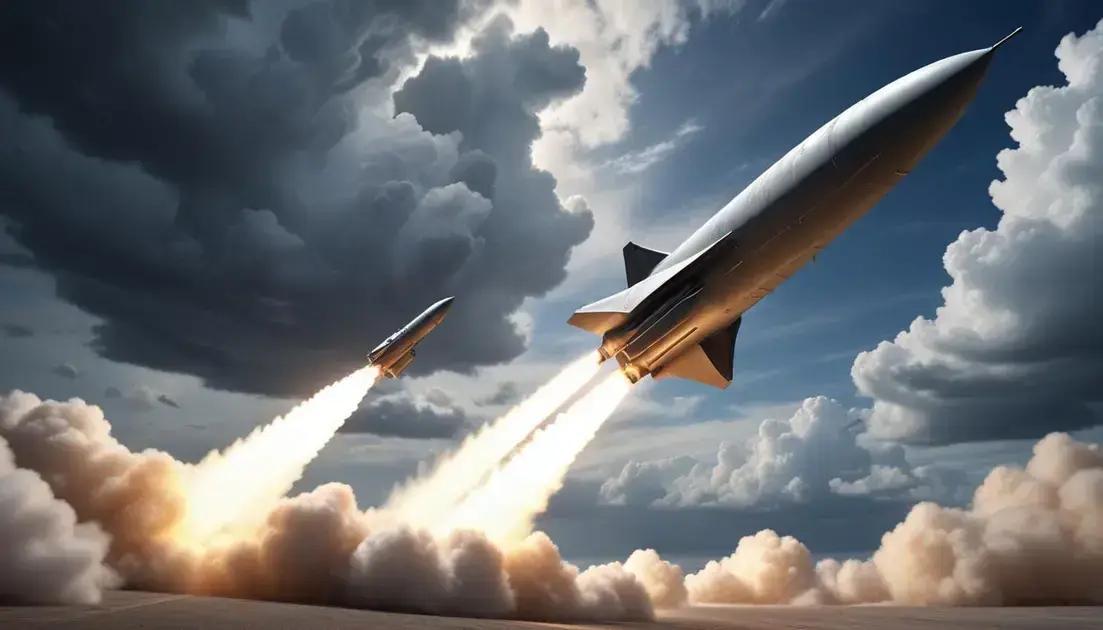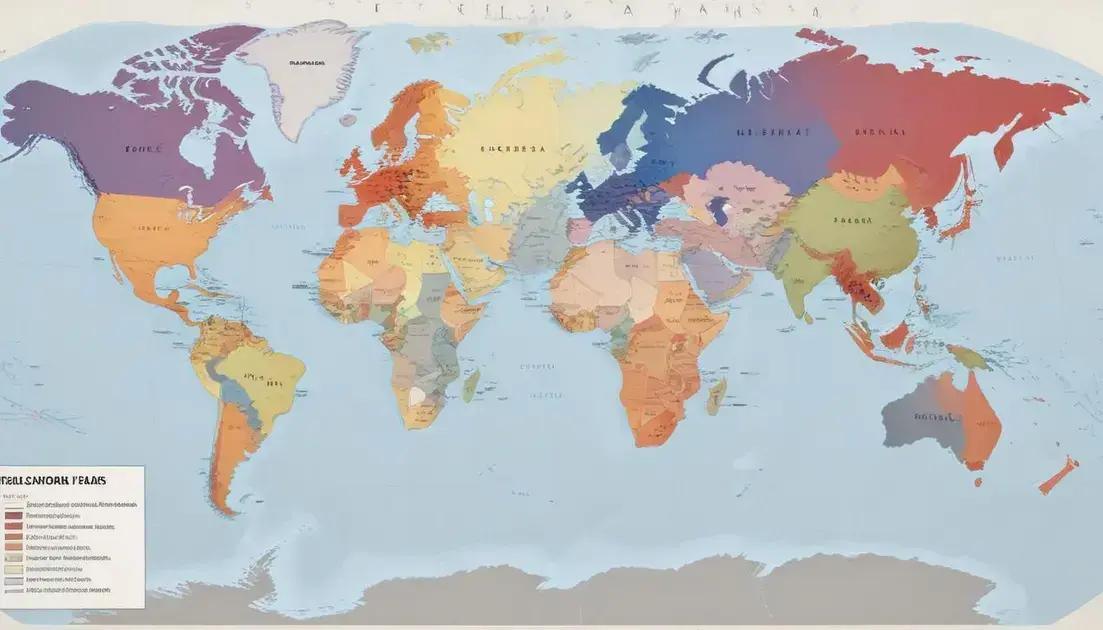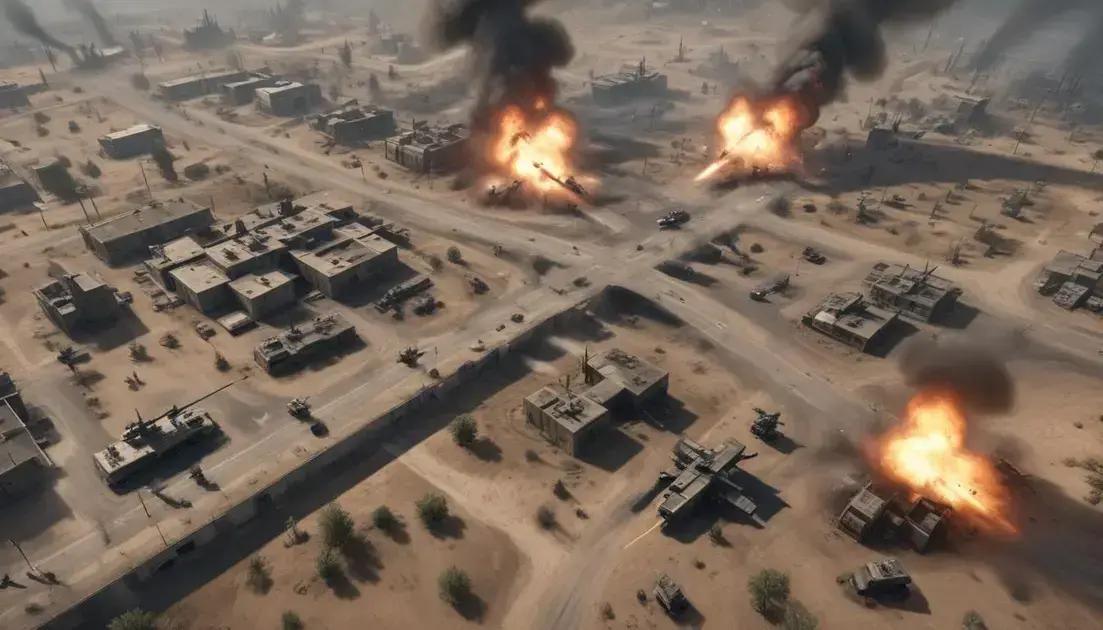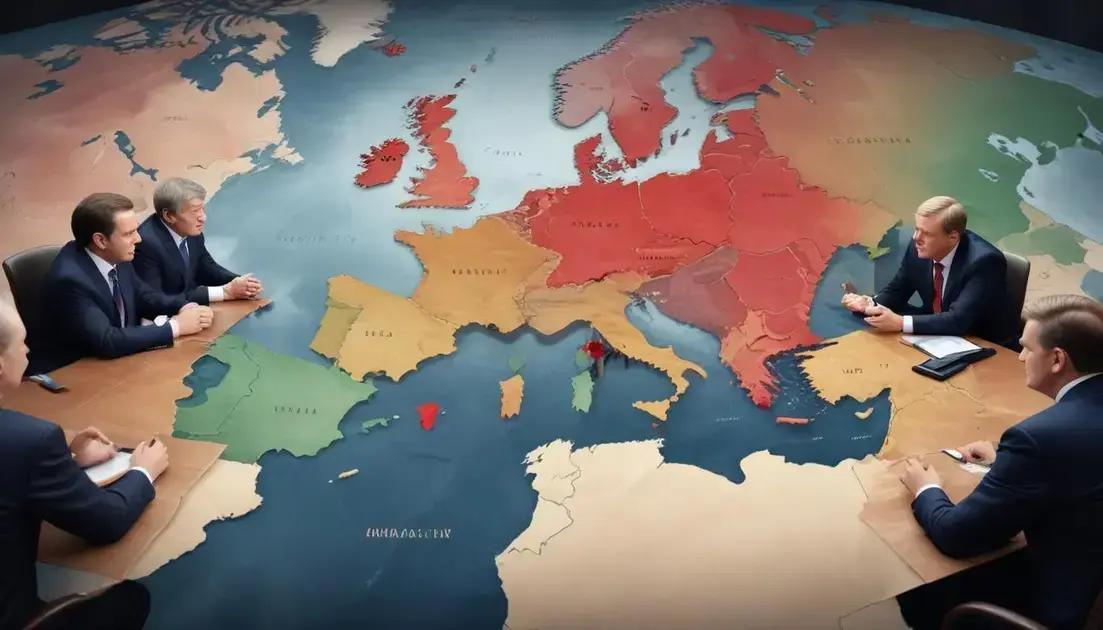
Hypersonic weapons: the new global arms race
Hypersonic weapons are redefining global military strategy. Traveling over five times the speed of sound, these advanced technologies provide nations with a significant tactical advantage. Countries like the U.S., Russia, and China are actively developing hypersonic capabilities, impacting defense strategies and international relations. The development of such weapons raises vital security concerns, urging nations to adapt their military approaches for a fast-changing landscape.
Hypersonic weapons are not just science fiction; they are a reality that is changing the landscape of international military power. Are you ready to understand their impact?
Introduction to Hypersonic Weapons
Hypersonic weapons are the latest wave in military technology. They travel faster than five times the speed of sound, making them incredibly hard to track and intercept. Countries around the world are racing to develop these cutting-edge tools. This new tech can change how wars are fought.
Imagine a missile that can reach its target in minutes, leaving little time for defense systems to react. That’s the power of hypersonic weapons. They combine speed and maneuverability, which makes them very dangerous.
For military leaders, the challenge is clear. As hypersonic weapons become more common, nations need to adapt their defense strategies. This technology is about more than just speed; it’s about changing the rules of engagement.
Countries like the United States, Russia, and China are leading the charge in hypersonic research. They are investing heavily in developing their own hypersonic capabilities. This not only increases their military might but also sends a strong message to the world.
We’re just scratching the surface of what this technology can do. As research continues, we’ll likely see even more advancements that redefine modern warfare.
The Technology Behind Hypersonic Weapons
The technology behind hypersonic weapons is fascinating and complex. These weapons fly at speeds greater than Mach 5, which is over 3,800 miles per hour. That’s faster than a bullet!
Hypersonic missiles can glide through the atmosphere while maintaining their speed. This makes them very difficult to detect and intercept. They can change direction quickly, which helps them dodge enemy defenses.
Two main types of hypersonic weapons exist: hypersonic glide vehicles (HGVs) and hypersonic cruise missiles. HGVs are launched into the upper atmosphere and glide back down towards their target. Meanwhile, cruise missiles use rocket engines to sustain their speed.
One key challenge for developers is creating materials that can withstand high temperatures. When traveling at such high speeds, a missile generates intense heat. Therefore, using advanced materials is crucial. These materials must endure extreme conditions without failing.
Countries are investing heavily in research and development of hypersonic technology. Investments aim to improve accuracy, speed, and stealth capabilities. This technology is set to transform how nations approach defense and warfare.
Global Strategic Implications
The rise of hypersonic weapons has big effects on global strategy. Countries know they must adapt quickly. The speed of these weapons changes how nations think about defense and offense.
Firstly, hypersonic technology can shift the balance of power. A nation with these weapons holds a strong advantage. They can strike targets before any defense systems can react.
This new arms race means countries are increasing military spending. They’re not just building weapons, but improving detection and response systems. It’s a game changer for national security.
The presence of hypersonic weapons can also raise tensions. Countries might feel threatened and increase their military presence. This could lead to an arms buildup, where nations compete to have the most advanced technology.
Allied nations must work together to develop effective strategies. They need to share information and technologies. By collaborating, they can create a united front against potential threats.
Ultimately, the development of hypersonic weapons will reshape military alliances. Nations will have to reconsider their relationships based on new threats and capabilities.
Case Studies of Current Developments
Looking at recent case studies helps us understand hypersonic weapons. Countries are already testing these technologies. For instance, Russia has tested its Avangard system. This missile can glide at hypersonic speeds and maneuver to avoid interception.
In the U.S., the Army and Air Force are also developing hypersonic systems. They conducted tests with the Army’s Long Range Hypersonic Weapon. This test showed its ability to fly at incredible speeds.
China is not far behind. They successfully launched their DF-ZF hypersonic glide vehicle. This weapon is part of their growing military technology and represents their commitment to hypersonic capabilities.
India is exploring hypersonic technology as well. They’re developing a hypersonic flight vehicle in collaboration with other nations. This showcases the global interest in hypersonic advancements.
Each case study highlights different approaches to developing and deploying hypersonic technology. These developments are notable not only for their speed but also for their strategic implications on the global stage.
Conclusion and Future Perspectives
The future of hypersonic weapons is bright and complex. As technology evolves, these weapons will likely become more advanced. Nations around the world are investing heavily to stay competitive.
With increased investment comes improved technology. This can lead to better speed, accuracy, and stealth capabilities. As a result, countries will adapt their military strategies accordingly.
Moreover, global security concerns will influence how hypersonic technology develops. Nations must balance innovation with the need for stability. International collaboration may help address these challenges.
In the coming years, we can expect more tests and deployments. New players may also enter the hypersonic race, broadening the landscape. This will keep the interest and focus on hypersonic technology high.
Overall, hypersonic weapons are changing military tactics. Their ongoing development will shape future conflicts and global military relationships.
Conclusion
In conclusion, the rise of hypersonic weapons marks a significant shift in military technology and strategy. These advanced weapons can change how nations approach defense and warfare. As countries continue to develop and test these systems, the global landscape will evolve.
With ongoing advancements in speed, accuracy, and stealth, hypersonic technology will redefine military tactics. Nations must adapt to these changes to maintain a secure position in the world.
It’s clear that collaboration and dialogue among countries will be essential. Addressing the challenges posed by hypersonic weapons can promote stability and security. As we look to the future, this technology will likely shape conflicts and influence international relations.
Ultimately, understanding and monitoring the development of hypersonic weapons is important for everyone. Staying informed allows us to grasp the broader impacts on global safety and security.


